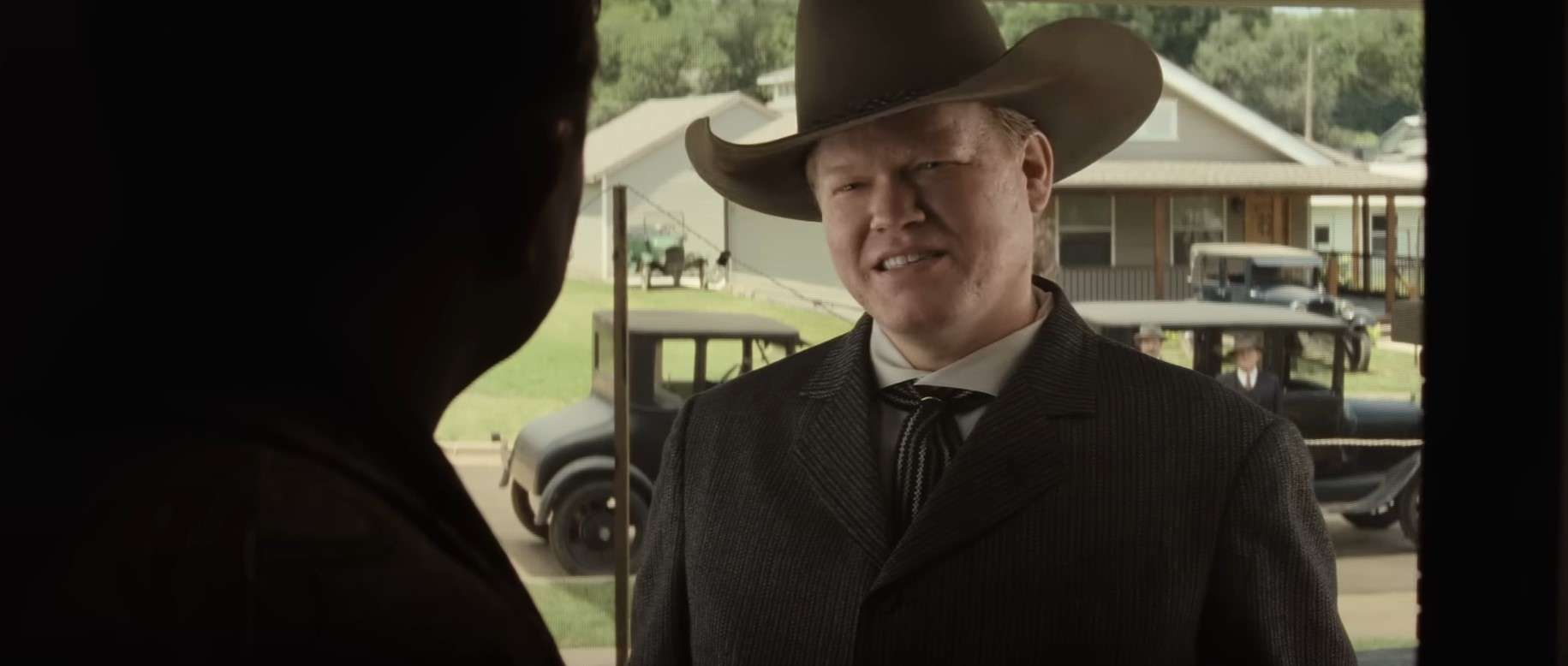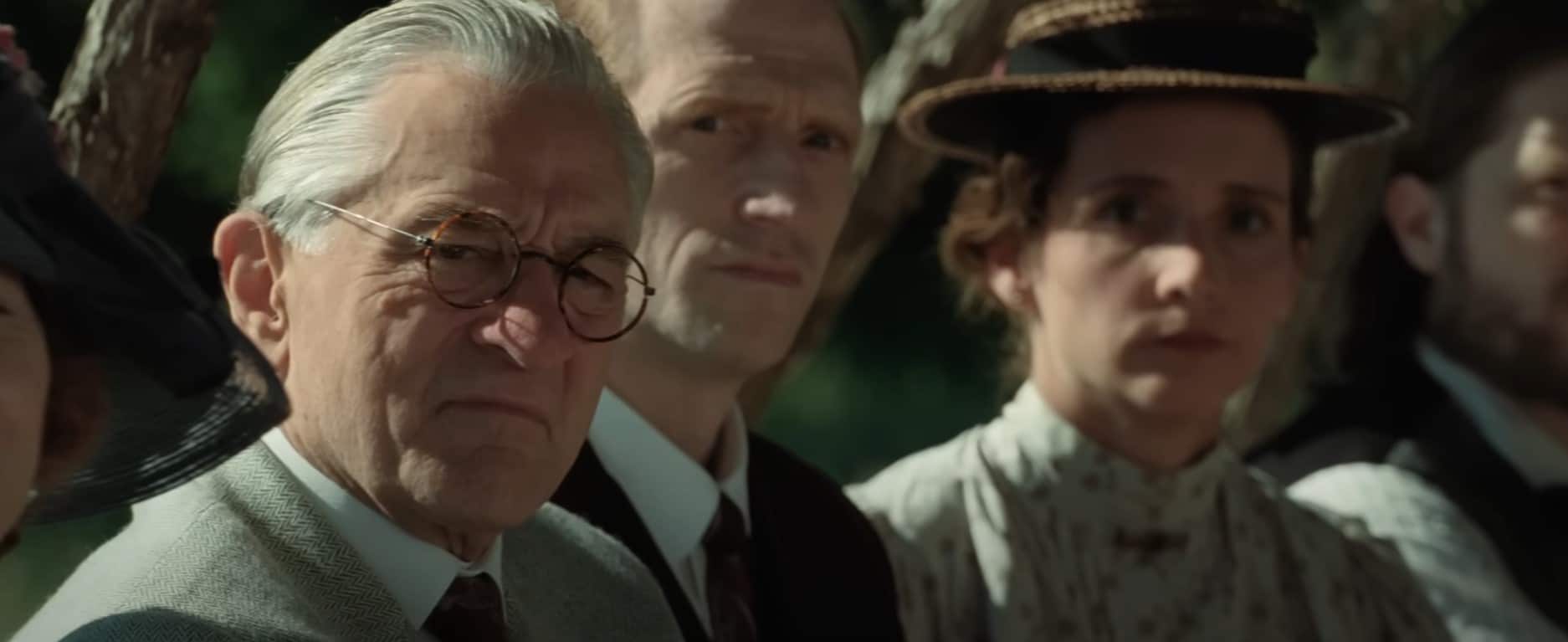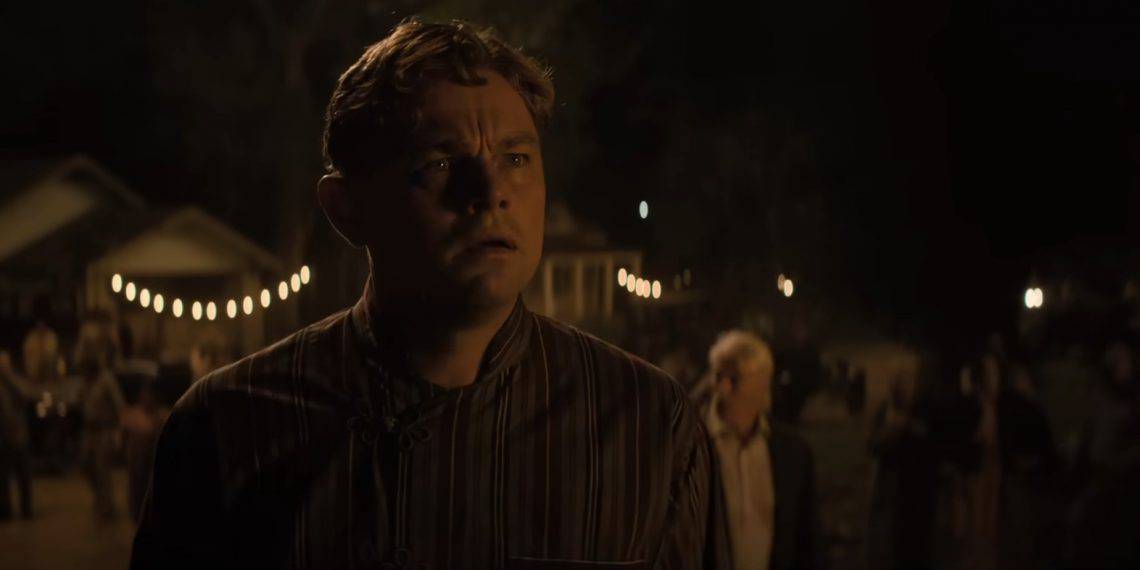When it comes to Martin Scorsese, a man whose work with classics like Casino, The Wolf of Wall Street, Taxi Driver, The Departed, Silence, and The Irishman, his most recent work for Apple TV+ “Killers of the Flower Moon” is no different when it comes to its conclusion, today, we’re exploring the conclusion of this film.
Scorsese has a knack for exploring violence in all its forms, not in the gruesome, gory Tarantino way, but in the way that violent characters, their actions, and their consequences impact society and those around them. He’s explored the lives of boxers, mobsters, religious intolerance or tolerance, sanity, delusion, paranoia, and police corruption.
In Killers of the Flower Moon, the conclusion is pretty much the same Scorsese-esque scheme we’re accustomed to. We see a long movie with many angles, a central story, and an ending that we need to backtrack to make sense of it all. I mean, in “Shutter Island”, we didn’t understand that the dude was crazy from the get-go, or that in Casino, it was all coming down crashing.

Killers Of The Flower Moon Plot
Scorsese is a man whose stories talk about action and consequences, how you can say you do everything for the benefit of someone else and you end up bitter, lonely, and regretting your actions. They are stories about mostly male anti-heroes, men full of defects.
This movie, based upon a book by David Grann that tells the story of Mollie Kyle (played by Lily Gladstone), an Osage tribeswoman who marries a white man called Ernest Burkhart (played by Leo Di Caprio), a veteran who’s constantly manipulated by his uncle William Hale (played by DeNiro).
The story takes us to Oklahoma at a moment when the oil rush was huge, there were a bunch of ambitious people wishing to get their hands on some land, make themselves rich from hydrocarbon extraction, and share the wealth with local tribes.
Scorsese delves deep into context in this movie, Ernest is a veteran but he’s not that smart, he can’t see beyond what’s his nose. Meanwhile, his uncle has an utterly dark plan to grab not only what he can legally but also the entire land as far as the eye goes, even if it means sending a bunch of people to the grave, which, as we see, he does.
DeNiro’s character has a plan, and that’s to steal the Osage tribe from their land, and their money and simply kill them in the process because dead men tell no tales. He hires goons and conducts shady deals with his corrupt lawyer in unfair conditions with the locals to acquire land.
Then things turned even darker when hundreds of Osages were killed, which was quite a stir because America in those years wasn’t busy worrying about some natives getting sent to the grave.
Back then, in Oklahoma, the White Majority dispossessed native Americans, there was oil under those lands, and the Osages were promised profits, but William Hale had another thing in his mind. Ernest is a bit of a grunt, a veteran with no money or work skills.
He ends up becoming a driver, meets an Osage woman, falls in love with her, marries her, and his uncle manipulates him into charming the woman, her family, and her tribe only to swindle them out of their money.
But Ernest falls truly in love; they have three children, and resulting from those three births, she develops diabetes. Mollie gets an insulin treatment from white doctors that she distrusts.
And Ernest, under the influence of his corrupt uncle and his brother, a man with whom he’s robbed before, poisons his own wife’s insulin. He does it because his character is flawed, and knows that without Mollie in the equation, things become easier to perform the land grab.
Still, Uncle William’s greed isn’t limited to swindling some few Osages; the man wants the entire county, so, there’s a bunch of murders in which he’s the main organizer and conspirator.

Killers of The Flower Moon Ending Explained
Ernest rebels against his manipulative uncle after his daughter Anna dies. DeNiro’s William King Hale character has a lawyer, W.S. Hamilton, played by (Brendan Fraser) who cajoled Ernest not to snitch on his uncle, and to claim that he was under pressure by Jesse Plemon’s character Tom White.
But Leonardo DiCaprio’s Ernest has a change of heart. He realizes just how much pain how much suffering a greedy, morally corrupt man like his uncle brought to the Osage, but like all Scorsese films, we and the characters see the consequences when it is too late, for Ernest, his daughter, to die to open his eyes.
The majority of the American population in the 1930s were White Anglosaxon Protestants busy with their own issues: Problematic economies, rampant crime, political instability, geopolitical isolationism in the face of war, and a post-war. Woodrow Wilson’s legacy and the corruption of both local and federal governments.
Scorsese is a master at showing us bad men doing bad things. We don’t see much of the consequences, except in epilogues, like that sad scene in The Irishman where Frank Sheeran is all alone and old, where Ray Liotta, at the end of Goodfellas, “got the live the rest of his life as a schnook”, or how Vegas ended up being Vegas.
But in the case of Killers of The Flower Moon, a true story, we see a different thing: we see the consequences. A big step forward for Scorsese in how he tells his stories, the director, now 81 years old, keeps his style but manages to put twists on his work.
In Killers of the Flower Moon, there are no good men, no heroes, just people, flawed people. Nature is like that; it gives men and women excellent talents, but to balance things out, nature also dons these talented people with terrible flaws.
Ernest Burkhart isn’t redeemed; he’s tormented, and his inner torment is predatory to how he ends. He can snitch, save his own ass and stay with his family. Yet, his reputation is tarnished. He won’t tell his wife that he was poisoning her.
When Mollie confronts Ernest about the insulin, he continues to lie, and Mollie leaves him, takes the kids, and Ernest gets sent to the penitentiary with a life sentence, only to get parole for snitching.
Ernest didn’t spend the rest of his days in jail, but like Ray Liotta’s character in Goodfellas, he got to live the rest of his life as a schnook. No wife, no kids, and no opportunity for redemption because Scorsese’s films seldom redeem the central character.
Take, for example, in comparison Silence from 2016, where Portuguese Catholic Priest Rodriguez is forced by the Japanese to renounce his faith after sending him to a concentration camp, torturing him, and even giving him a new identity, personality, and even wife of a deceased Japanese man.
But when we see the final scene, when he’s cremated, he has a crucifix in his hands. But that isn’t the case for Killers of the Flower Moon, in which you can interpret the ending in many ways. My take: No redemption.





